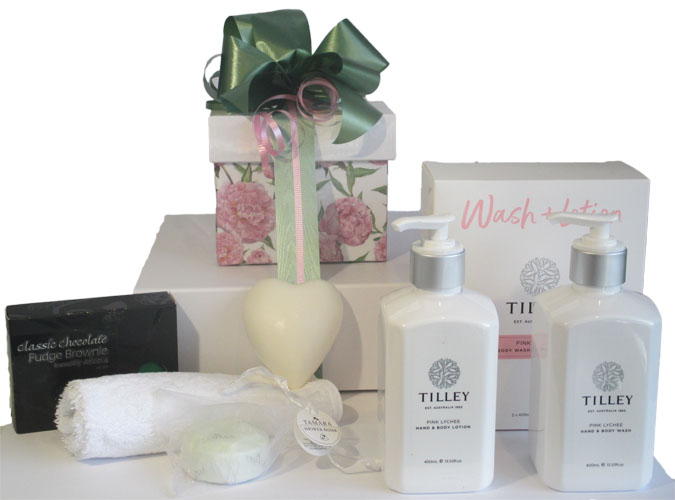When you’re putting together a pamper hamper that screams “Made in Australia” and you want to make sure every plush towel, natural soap, and organic tea truly comes from down under, you’re faced with a maze of labels, certificates, and glossy brochures. In this guide, we’ll walk through the practical steps to verify local sourcing for Australian pamper hamper items, so you can confidently say, “All the goodies in this hamper are proudly Australian.”
Why Local Sourcing Matters
Local sourcing isn’t just a trend; it’s a commitment to community, sustainability, and quality. By choosing products that are grown, manufactured, or processed in Australia, you:
- Support local farmers and artisans. Reduce the carbon footprint associated with long‑haul shipping. Ensure traceability and higher standards of safety and ethics.
Imagine you’re selecting a set of bath salts. If you know they’re sourced from an Australian salt flat, you can be certain of the mineral composition and the environmental practices behind them.
The Australian Pamper Hamper Landscape
Australia offers a rich tapestry of natural ingredients: eucalyptus, lemon myrtle, and native honey, to name a few. But the market is crowded with international brands that mimic the local feel. How can you differentiate the genuine article? Look for:
- Geographical indicators such as “Made in Australia” or “Australian‑grown”. Certification logos like the Australian Organic logo or the Australian Made logo. Supplier statements that detail the origin of each component.
A quick anecdote: I once received a hamper for my sister’s birthday that claimed to contain “Australian‑grown bamboo towels.” A week later, the towels smelled faintly of plastic—an unmistakable sign they weren’t truly local. The lesson? Always verify.

Steps to Verify Local Sourcing
Check Supplier Credentials
Start by asking the supplier for their Australian business registration details. A legitimate local supplier will have a valid Australian Business Number (ABN) and will be listed in the Australian Business Register.
Ask for Product Origin Labels
Every item should carry a clear label stating its country of origin. For instance, a jar of honey should read “100% Australian honey.” If the label is vague (“Sourced from Australia”), request a more precise statement.
Inspect Packaging Details
Packaging is often the first line of evidence. Look for:
- Australian postal stamps or post office logos. Local manufacturing marks, such as a factory address or a “Made in Australia” seal. Any mention of local distributors or retailers.
Use Third‑Party Verification Services
Several Australian agencies offer product verification. The Australian Made logo, for example, is awarded after a rigorous audit. If a product carries this logo, it has passed the necessary checks.
Common Pitfalls and How to Avoid Them
- Misleading Marketing
A product might claim “Australian‑inspired” while being manufactured overseas.
- Inconsistent Labels
Some items may have a local logo but the product itself is imported.
- Hidden Ingredients
A “natural” soap might contain synthetic additives sourced from abroad.
- Short‑Lived Certifications
Certifications can expire; always confirm the validity date.
- Bulk Orders from Unknown Suppliers
Bulk purchases can mask the true origin of individual items.
> “Quality is never an accident; it is always the result of high intention, sincere effort, intelligent direction, and skillful execution.” – Aristotle
Case Study: A Small Business Success
When a https://www.scribd.com/document/935113242/Luxury-Pamper-Hampers-Australia-with-Local-Craft-Beer-Selection-The-Ultimate-Gift-Experience-132972 boutique Australian spa launched its own pamper hamper line, the founder faced the same dilemma: how to confirm local sourcing for each item? She adopted a simple checklist:
- Supplier audit: visited local farms and factories. Product traceability: mapped each ingredient back to its source. Customer transparency: included a QR code linking to a sourcing story.
The result? A 30% increase in sales and rave reviews from eco‑conscious clients.
Your Next Steps
Create a sourcing audit sheet that lists each item, its supplier, and origin verification. Request documentation such as certificates, lab reports, or supplier statements. Cross‑check with official registries like the Australian Made website. Document your findings in a clear, customer‑friendly format (e.g., a pamphlet inside the hamper). By following these steps, you’ll not only Sydney hampers confirm local sourcing for Australian pamper hamper items but also build trust with your customers.The Perfect Gift Awaits
Now that you know how to confirm local sourcing, you can assemble a pamper hamper that truly reflects Australian pride. Whether it’s a luxury spa kit or a cozy bedtime bundle, the confidence that every item is genuinely local adds an extra layer of value—and a touch of Aussie charm.
Ready to curate your own local‑sourced hamper? Start by reaching out to trusted Australian suppliers today, and let the journey to a truly authentic gift begin.
